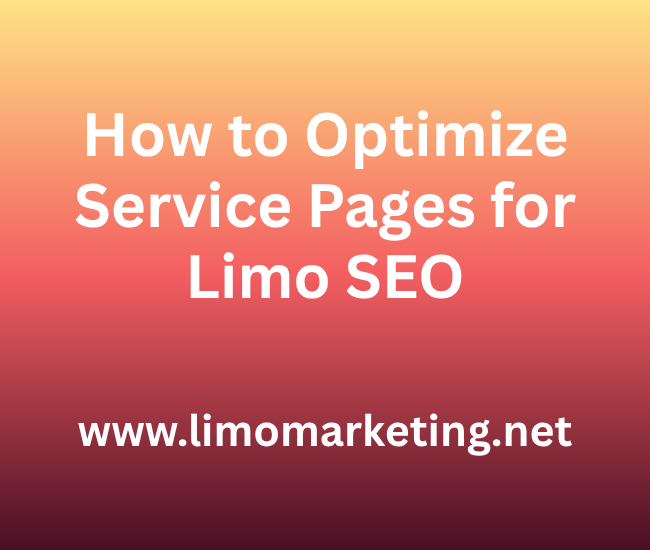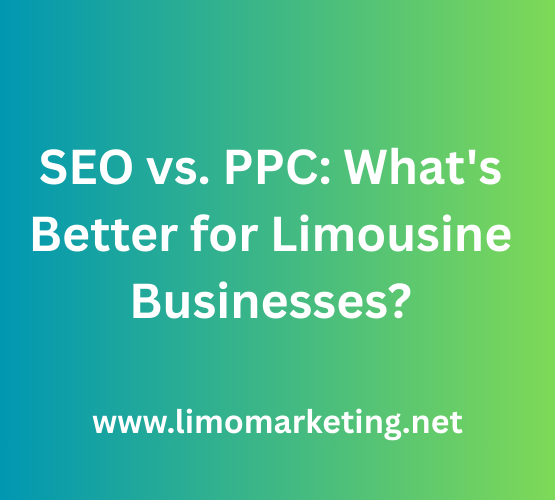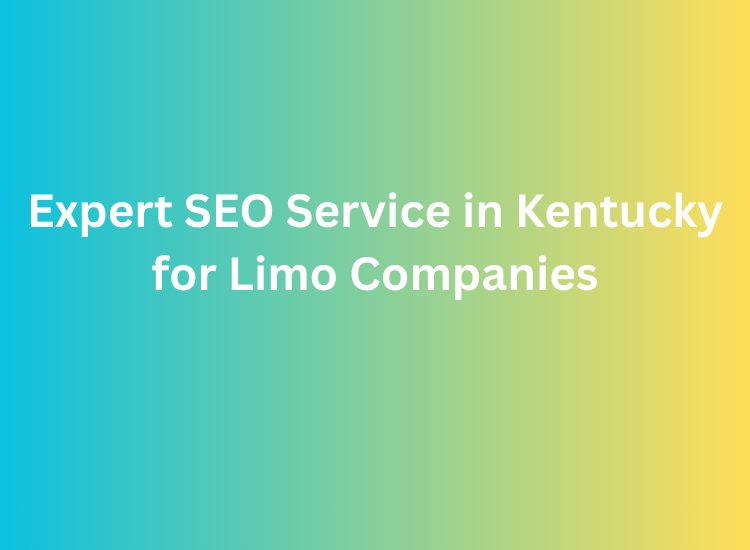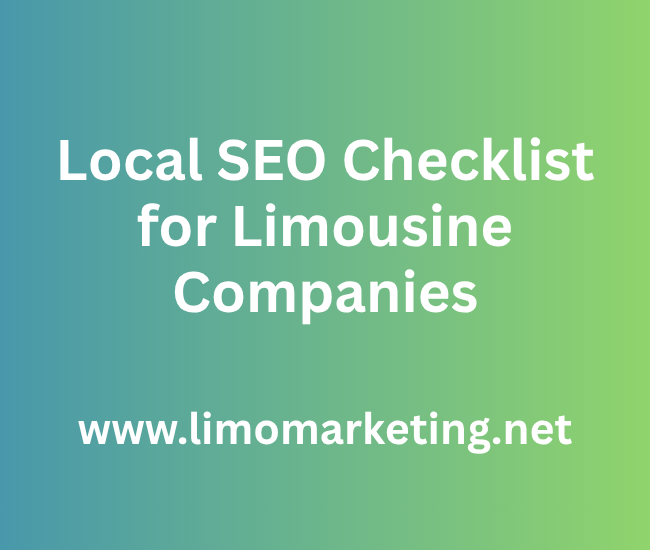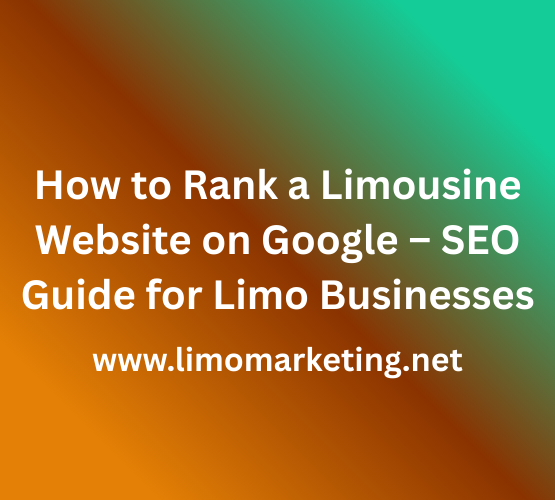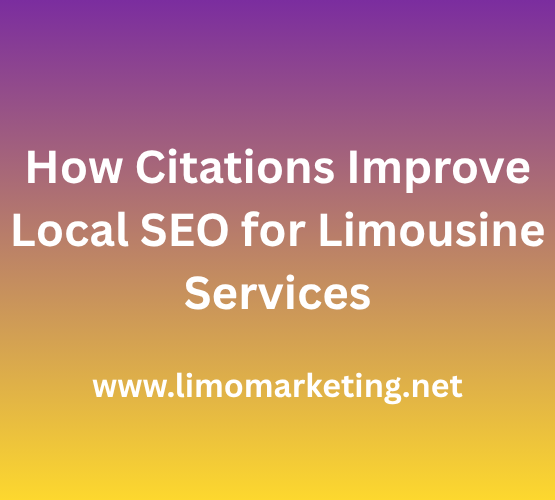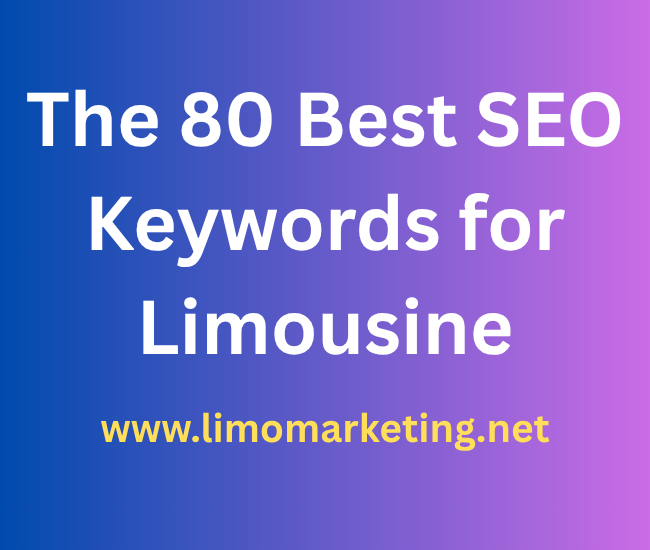How to Optimize Limo Service Pages for Higher Google Rankings
Discover how to optimize service pages for
Limo SEO with expert strategies that improve search rankings, attract high-value clients, and drive bookings. Learn how to use targeted keywords, structure content effectively, and implement on-page elements like titles, headers, and schema to enhance relevance for local searches. Whether you’re offering airport transfers or wedding limos, this guide helps position your business ahead of the competition with practical, results-driven SEO techniques specifically designed for limousine service websites.
Importance of Optimizing Service Pages for Limo Businesses
At
Limo Marketing, we know how competitive the limousine industry can be. With users searching for specific services like “wedding limo near me” or “airport limo service in [city],” your service pages must be optimized to appear for those queries. A well-structured and properly optimized page helps search engines understand your offerings, while also making it easier for potential clients to find and trust you. Strong service page SEO not only improves rankings but also increases inquiries and bookings from high-intent users who are ready to hire.
Keyword Strategy – Choosing the Right Keywords for Limo Services
We begin every optimization process with keyword research that reflects how your customers search. For limo SEO, we focus on service-intent keywords like “corporate limo service,” “prom limo rental,” and “stretch limo for events.” We also consider modifiers such as location, vehicle type, and occasion. It’s essential to map each keyword to a specific page and avoid cannibalizing terms across multiple pages. Our goal is to ensure every limo service you offer has a keyword target that aligns with customer intent and local relevance.
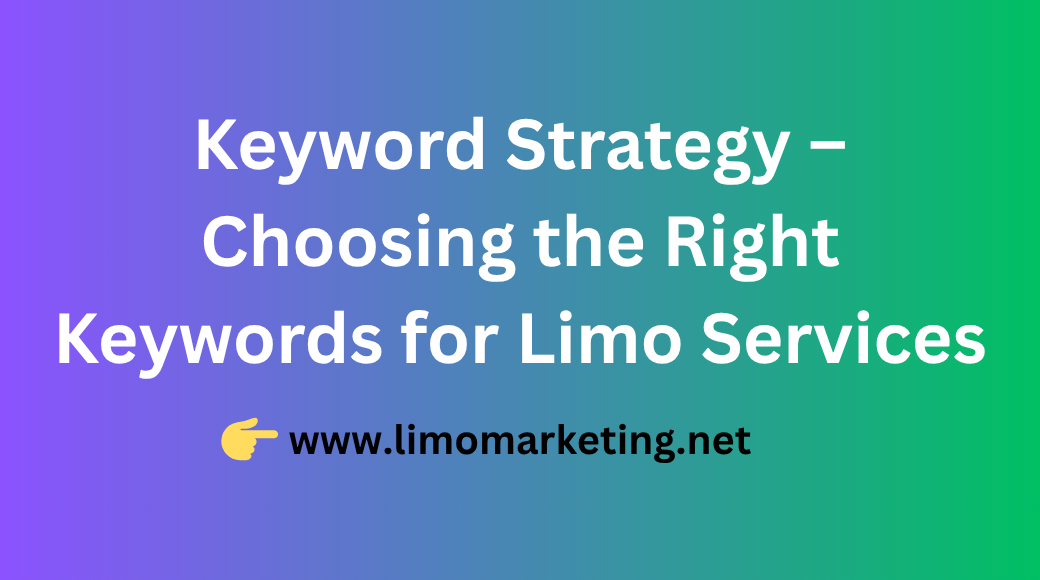
URL, Title Tags, and Meta Description – Best Practices
URLs should be short, descriptive, and keyword-focused. For example,
/wedding-limo-service-chicago/ is more effective than
/service1.php. We create compelling title tags using primary keywords and service type, such as “Wedding Limo Service in Chicago | Luxury Rides.” Meta descriptions must provide a brief value statement and encourage clicks, while remaining within 155–160 characters. These elements are not only important for ranking but also play a key role in your click-through rate from search results.
Page Structure – How to Format Limo Service Pages
We structure limo service pages with clear H1, H2, and H3 headings that reflect the searcher’s journey. Each page begins with an overview of the service, followed by key sections: benefits, service areas, fleet details, pricing info (if applicable), and FAQs. This logical format helps search engines crawl and index your content efficiently, while also guiding users through relevant information. At Limo Marketing, we also include anchor links for easy navigation, especially for longer pages that cover multiple sub-services.
Content Relevance – Writing for Your Specific Limo Services
Each limo service page must speak directly to the customer’s need. Instead of using generic content, we focus on specifics—how your wedding limo service supports event timelines, or what clients can expect from your airport transfer reliability. We write 300–800 words per page with unique descriptions for each offering. Repeating the same content across pages weakens SEO performance. We keep content practical, descriptive, and service-focused, which improves ranking and increases user engagement.
Local SEO Signals – City Pages, Location Terms & GMB
Local intent plays a huge role in limo service searches. We integrate city-specific keywords naturally within each service page—terms like “New York prom limo rental” or “Los Angeles airport limo.” We also recommend creating separate city pages for service coverage areas. Google Business Profile (GMB) should be synced with your site content, using matching NAP (Name, Address, Phone) data. Embedding Google Maps and adding schema markup further reinforces your local authority in search engines.
Internal Linking – Connecting Related Service Pages for Limo SEO
We build a strong internal linking system to help both users and search engines explore related services. For example, your airport limo page should link to the executive limo page or FAQ section. These contextual links improve crawlability, pass authority between pages, and increase time on site. We ensure anchor texts are descriptive and keyword-aligned. Our silo structure approach keeps your site organized by service category and location, which helps search engines better index and rank your content.
Adding Trust Elements – Reviews, Certifications, & FAQs
Trust drives conversions, especially for high-value services like limousines. We add client testimonials, safety certifications, service guarantees, and memberships (such as NLA) directly onto the service pages. A strong FAQ section answers common customer concerns like “Is gratuity included?” or “How early should I book for a wedding?” These trust signals reduce friction and help convert visitors into leads. Our layout ensures these elements are visible and easy to access without overwhelming the design.
Image Optimization – Alt Text, File Names, and Geo-tagging
We optimize every image used on your limo service pages. File names include relevant keywords like
airport-limo-newark.jpg, and alt texts describe the image context to improve accessibility and SEO. We recommend geo-tagging important images, such as your fleet or service events, with EXIF data when applicable. This supports local rankings. Compression ensures that image loading doesn’t slow the page. Clean visuals with proper SEO tags not only improve rankings but also reinforce professionalism.
Mobile Speed & UX – Technical SEO for Limo Service Pages
Most limo searches happen on mobile devices. We ensure that your site loads in under three seconds, uses a responsive layout, and avoids intrusive interstitials. Technical SEO tasks include reducing CSS/JS bloat, leveraging browser caching, and optimizing core web vitals. Clear call-to-action buttons like “Book Now” or “Call for Quote” should be visible without scrolling. We build service pages to meet both user experience and Google’s performance expectations, ensuring smooth performance across all devices.
Tracking & Adjustments – How to Measure SEO Impact
SEO doesn’t end at publishing. We implement tracking tools like Google Analytics, Search Console, and call tracking to measure how each service page performs. We monitor keyword rankings, bounce rate, conversions, and scroll depth to evaluate page success. Based on the data, we make ongoing adjustments—rewriting underperforming sections, improving calls to action, or updating outdated content. At Limo Marketing, we take a data-first approach so our clients see consistent growth over time.
Our Service Offer – How Limo Marketing Can Optimize Your Website
At
Limo Marketing, we specialize in SEO for limousine businesses. From keyword mapping to local optimization and technical audits, we build service pages that rank and convert. Our team handles everything—from rewriting content to implementing schema and improving site speed. We focus on what matters most: increasing inquiries and filling your booking calendar. If your current service pages aren’t generating leads, we’re ready to fix that. Let’s build a website that works as hard as your drivers do.
Ready to Grow Your Limo Business?
Let Limo Marketing transform your service pages into revenue-generating assets.
Contact us today to schedule a free website audit and discover what’s holding your rankings back.

